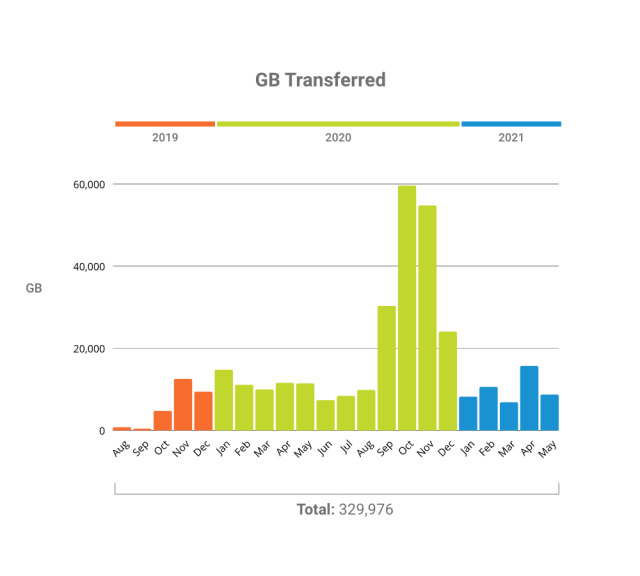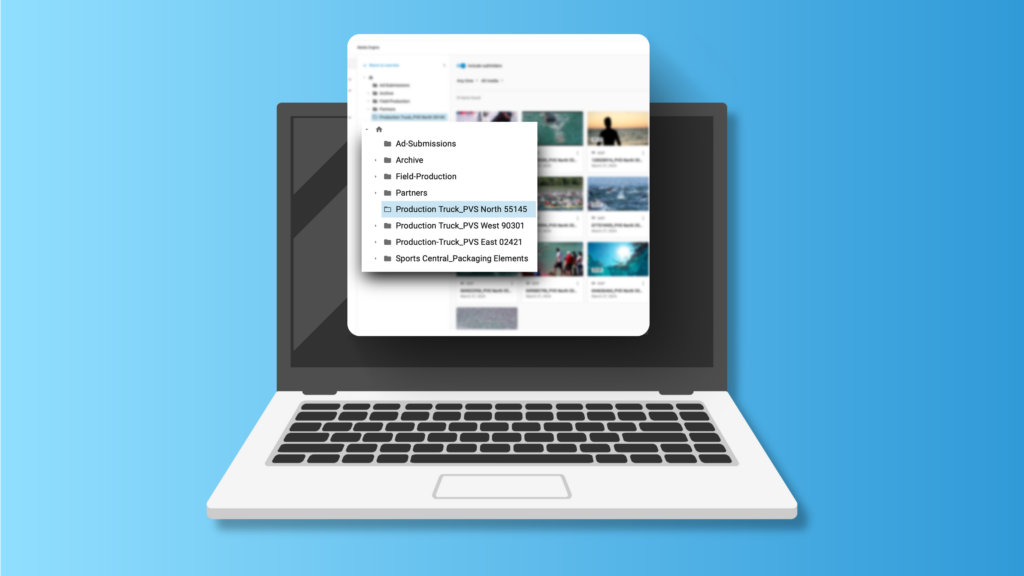Cinema Máquina Taps a Global Market with the Help of Media Shuttle
The challenges Cinema Máquina regularly faces — dispersed creative teams, massive amounts of content traveling great distances, and precious little time — are typical media obstacles. Throw in a pandemic, lockdowns, and a show that must go on; those obstacles are only exacerbated. Throughout it all, Cinema Máquina kept ongoing.
Based in Mexico City, Cinema Máquina is a film and television post-production facility specializing in everything from conforming and aligning to color grading, mastering shows, and VFX. Although their primary market has historically been Mexico and Latin America, the explosion of interest in international content has opened up additional opportunities.
One opportunity was “Selena,” a Netflix series exploring the life and legacy of Mexican-American pop superstar Selena Quintanilla. A landmark experience for Cinema Máquina, their team started working on “Selena” before the pandemic and continued through it because of preparation, forethought, and Signiant’s Media Shuttle.
Signiant sat down with Ariel Gordon, founder and CEO, to discuss Cinema Máquina’s use of Signiant’s Media Shuttle, their experience working through the pandemic, and Mexico’s impact on the global market.
Selena had some file movement challenges for you, even before the pandemic. How did you plan for that?
We were hired for “Selena” and did the post-production for the show in our facility [with] their editing teams. They decided to have a post-production house in Mexico City, even though they were shooting all over Mexico. This means we’re many kilometers away from where shooting is actually happening. So, the first question became: “how do we get the material to our facility?”
At first, a more traditional approach was considered: they would have a runner coming to us every few days with some hard drives, but that just didn’t seem efficient. I was saying, “We’re in a more modern world. We don’t need to go that route.”
That’s where Media Shuttle came in?
Not right away. When we first suggested implementing it, there was some skepticism. On top of that, some people were saying, “Why does the footage need to go directly to you? Maybe the teams can upload it to Netflix, and then you can download it.” But we were also doing the dailies in Mexico City, which is a massive, time-sensitive set of workflows. There was a lot of pressure, so I said, “No, you have to understand, we need everything right away if we’re going to stay on track.”
Once in place, what was your Media Shuttle workflow?
Signiant helped us figure out how to set it up, navigate any troubles, and teach our engineering team how to manage it all. It was so simple and so straightforward.
We set up Shuttle portals and an upload station. Every time camera cards were filled, they would start uploading them — normally two at a time. Over the course of the day, we’re getting the majority of that day’s material directly to us. Even though there was a ton of footage being sent, it never took more than a few hours for us to receive everything so that we could get right to work.
It was really something so simple. Even with just two Mac Minis, two upload stations, and a 200mb, regular connection, we were able to get everything. We could have the dailies ready by noon. And, even better, since they were two hours behind us, they would get everything by 10 that morning.
And this is how you did the whole project?
Absolutely. We were able to manage all of these workflows from miles away, thanks to Media Shuttle. We were able to do an entire series like we were on-site with the crew!
Was “Selena” the first time you used Media Shuttle?
We had used it before with some other companies [that] had it. I was always impressed how fast it was.
Now, if I’m being honest, one of the questions that arose before we adopted it revolved around the fact that some of the studios we worked with used Aspera. “Selena” made it clear Media Shuttle was the way we wanted to go, though. I knew it was much faster than the competition, incredibly secure, and if an upload stalls, it can immediately restart. These were all things I really valued.
Has your team seen an increase in usage since adoption?
Definitely. Before, we would accept materials in many ways. Now, we don’t accept material in any way but through Media Shuttle. We don’t allow something like Dropbox because it’s too slow, it’s too insecure, it doesn’t work.
Right now, we’re doing around 10 to 14 feature films a year plus around 10 or maybe more episodic series. So, it’s a lot of material; it’s a lot of work.
We [have] Media Shuttle portals for each project. That means, at any given time, we’re working with 10 to 15 individual portals. But we also have portals for themes within a project, such as VFX will have its own portal, color grading will have its own portal. As for users, we have 70-80 users total, 50 active users right now.
The pandemic had a big impact on your team. What was that like?
We were lucky in a lot of ways. It was really hard for a lot of organizations because many people thought that it wasn’t going to last all that long. Everyone thought it was going to close down for four, eight, maybe 12 weeks tops, so there wasn’t much preparation in many cases. Then, production just halted — right in the middle of projects for many businesses.
First off, we had a number of productions that had finished shooting already, so we could keep working on the post-production element of those projects uninterrupted. More so than that, though, we were more prepared, I think.
Later, there was a small reopening and they resumed shooting “Selena,” and we were able to send all the material to the editors’ houses through Signiant for the entirety of the season we were working on. And, it was a lot. We had, at the end, 35 VFX artists we were working with, and we were able to send all the raw material from our studio to all the artists. It was amazing because it was fast, it was secure.


How did Signiant and Media Shuttle help with that?
Signiant was incredibly understanding. They said, “Hey, you can use it with as many users you want, no matter your current account.” We were able to establish accounts for everyone outside of the office to receive and send back material. That was key to working remotely so quickly because then the editors could send the material here, no problem.
Honestly, when we were talking about renewing our subscription, I said, “Of course!” Without Media Shuttle, we would just have broken down in the pandemic, and we were able to work through it. We were also lucky to have our centralized storage and maintain access to that. Once you try Media Shuttle, you won’t go back to not using it.
Do you think your Media Shuttle usage in remote workflows will continue to grow past the pandemic?
Yes. One lead editor called me after we set up remote editing in everyone’s houses, and she was so happy. At the end of our conversation, her comment was, “I don’t want to have to go back into the studio. I like the idea of editing remotely. When I have to meet with a client, I can go back in, but I really like this.” So, she was really, really happy with that, and Media Shuttle has played a big role in it.
I’m not saying the office will disappear. I think it’s a very important thing for people to mingle, get together, have a coffee, and have connections. But I think it’s going to be important, for the near future, to combine those inhouse and remote workflows; to let people work from home when they are more happy from their house. These hybrid workflows are looking like the future.
After experiencing the pandemic, where do you see technology moving?
To start, I think the industry as a whole has grown a lot. And I think Netflix, Amazon Studios, Disney, HBO Max, all the platforms are coming along. There’s a lot to see, and there’s a lot of content being produced worldwide, and OTT production is helping.
Cloud is becoming something big. For Mexico, though, the absorption has been a little bit slower, because of connectivity limitations. But, as soon as the pipelines become bigger, as soon as I can have everything in the cloud and not have to have local storage, then I think you’re going to see much more adoption. Still, what I see coming in the next few years are hybrid models — some things in the cloud, some on-prem. Even when bandwidth is perfect, I don’t think we’re going entirely into the cloud anytime soon.
What does the world market look like for Cinema Máquina?
In my opinion, Mexico is becoming a production hub for a lot of Latin American content, and that’s been great to see, but it’s not just us. Production is going to become more segmented. Globalization and streaming means that local productions can be consumed globally, so there’s less need to do everything in one place or in one type of way.
There are 500 million Spanish speakers in the world, and now, with new platforms, people around the globe are watching foreign-language films and TV. I don’t want to sound cheesy, but I think it’s an amazing shift. I’m really proud of the moment that Mexico is living as a production hub. I’m really proud of the moment that Latin content is having.
This interview has been edited and condensed for clarity.


